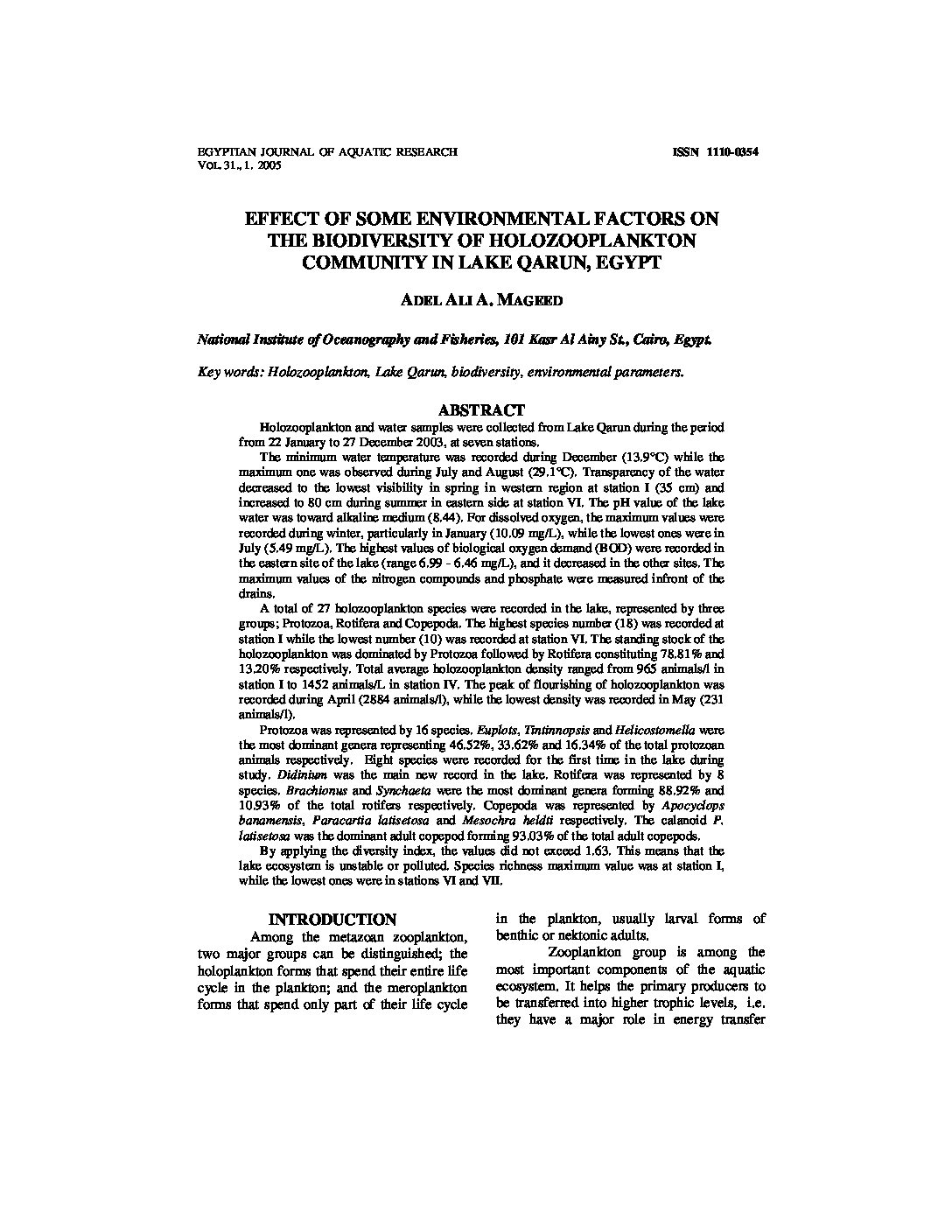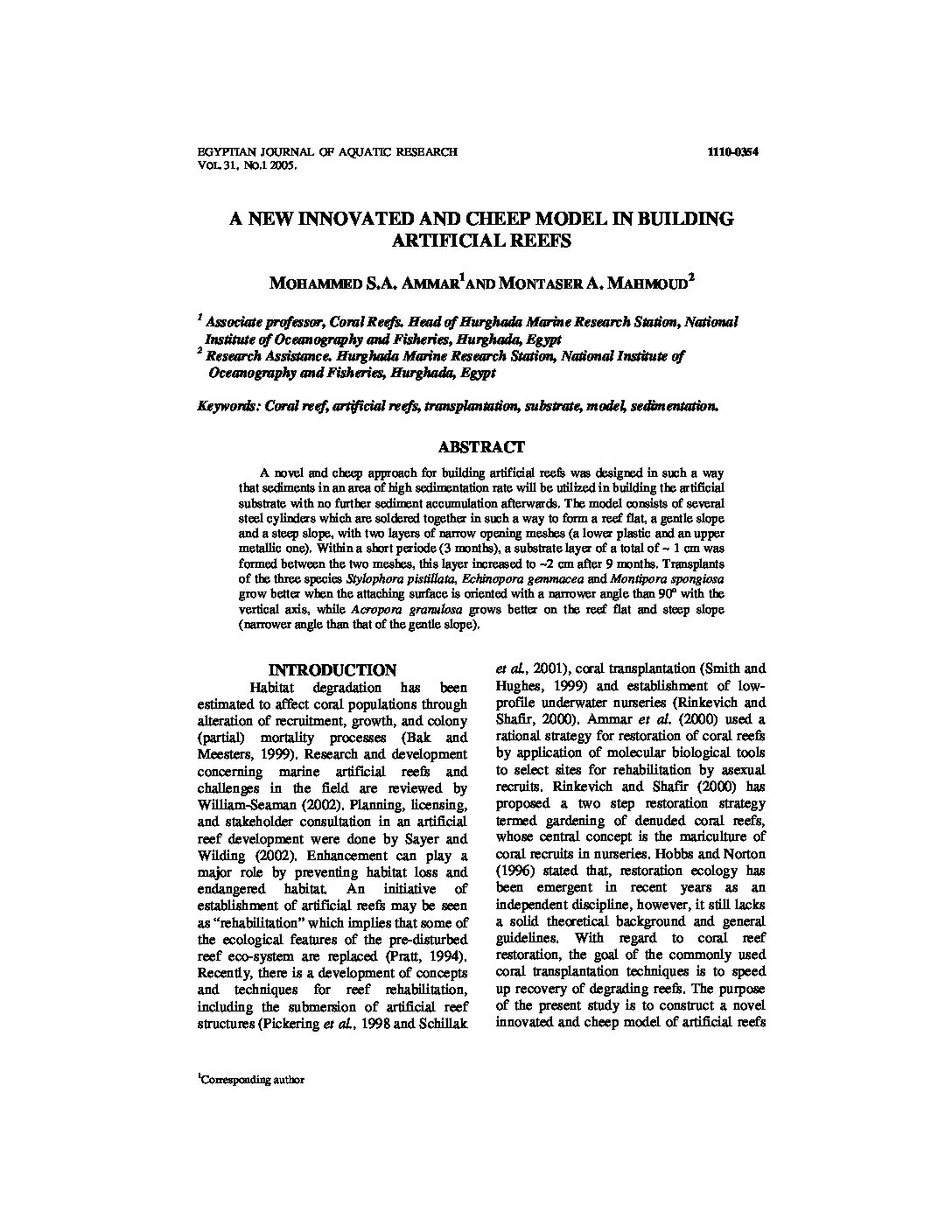Categories
vol-31EFFECT OF SOME ENVIRONMENTAL FACTORS ON
THE BIODIVERSITY OF HOLOZOOPLANKTON
COMMUNITY IN LAKE QARUN, EGYPT
ADEL ALI A. MAGEED
National Institute of Oceanography and Fisheries, 101 Kasr Al Ainy St., Cairo, Egypt.
Key words: Holozooplankton, Lake Qarun, biodiversity, environmental parameters.
ABSTRACT
Holozooplankton and water samples were collected from Lake Qarun during the period
from 22 January to 27 December 2003, at seven stations.
The minimum water temperature was recorded during December (13.9°C) while the
maximum one was observed during July and August (29.1°C). Transparency of the water
decreased to the lowest visibility in spring in western region at station I (35 cm) and
increased to 80 cm during summer in eastern side at station VI. The pH value of the lake
water was toward alkaline medium (8.44). For dissolved oxygen, the maximum values were
recorded during winter, particularly in January (10.09 mg/L), while the lowest ones were in
July (5.49 mg/L). The highest values of biological oxygen demand (BOD) were recorded in
the eastern site of the lake (range 6.99 – 6.46 mg/L), and it decreased in the other sites. The
maximum values of the nitrogen compounds and phosphate were measured infront of the
drains.
A total of 27 holozooplankton species were recorded in the lake, represented by three
groups; Protozoa, Rotifera and Copepoda. The highest species number (18) was recorded at
station I while the lowest number (10) was recorded at station VI. The standing stock of the
holozooplankton was dominated by Protozoa followed by Rotifera constituting 78.81% and
13.20% respectively. Total average holozooplankton density ranged from 965 animals/l in
station I to 1452 animals/L in station IV. The peak of flourishing of holozooplankton was
recorded during April (2884 animals/l), while the lowest density was recorded in May (231
animals/l).
Protozoa was represented by 16 species. Euplots, Tintinnopsis and Helicostomella were
the most dominant genera representing 46.52%, 33.62% and 16.34% of the total protozoan
animals respectively. Eight species were recorded for the first time in the lake during
study. Didinium was the main new record in the lake. Rotifera was represented by 8
species. Brachionus and Synchaeta were the most dominant genera forming 88.92% and
10.93% of the total rotifers respectively. Copepoda was represented by Apocyclops
banamensis, Paracartia latisetosa and Mesochra heldti respectively. The calanoid P.
latisetosa was the dominant adult copepod forming 93.03% of the total adult copepods.
By applying the diversity index, the values did not exceed 1.63. This means that the
lake ecosystem is unstable or polluted. Species richness maximum value was at station I,
while the lowest ones were in stations VI and VII.







